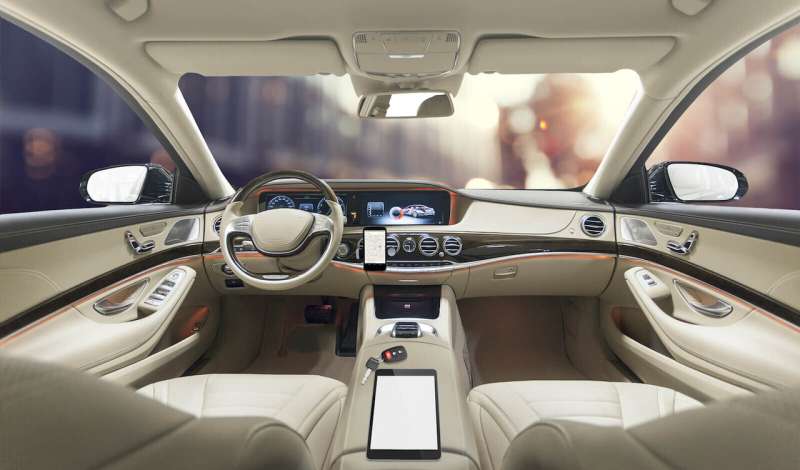July 2, 2019 weblog
Ossia suits up for new day in wireless charging

Technology advances by leaps, bounds—and stagnates in a stubborn flat line. Technology has showcased machines that can learn how to make a sophisticated pizza, identify individuals by heartbeat and bring self-driving cars to move, stop and park. We are still, however, sentenced to charging pads and holding patterns on walls to juice our devices.
Bellevue, Washington-based Ossia wants to be in the frontline of game-changers. They are promoting their solution for wireless charging.
Ossia has announced it received authorization from the U.S. Federal Communications Commission for its wireless power system.
As it is called, Ossia's Cota Real Wireless Power delivers power over-the-air, at a distance, and without the need for line-of-sight.
"After months of collaboration with the FCC's Office of Engineering and Technology, I'm thrilled to announce that Ossia received official notice on June 27th, 2019, of equipment authorization for Cota under FCC Part 15 and Part 18," said the company founder Hatem Zeine.
The news release stated, "Ossia's initial certification covers a Cota transmitter operating at 2.4 GHz for deployments in commercial, industrial, and business environments, at a distance of up to one meter."
Cota uses radio waves to provide power. With Cota, it is all about using 2.4-gigahertz radio waves. IEEE Spectrum's Evan Ackerman in 2016 had already found the Cota approach interesting. "The wireless power that everybody wants and nobody has is the kind where all of your devices are charging themselves wherever they happen to be, whether you're using them or wearing them or not. That is what Ossia is offering with Cota."
Real Wireless Power was FCC Certified under Parts 18 and 15. The system is available to be marketed and sold in the U.S. IEEE Spectrum's headline read, "Ossia's Wireless Charging Tech Could Be Available By Next Year."
Details about the certification news was discussed in the company release. "Ossia's initial certification covers a Cota transmitter operating at 2.4 GHz for deployments in commercial, industrial, and business environments, at a distance of up to one meter."
Some reasons for why this matters: (1) It validates the safety of Cota delivering wireless power at a distance, and (2) paves the way for enablement of devices and sensors limited by the use of wires or batteries. The tech met Specific Absorption Rate (SAR) requirements for safety, said the release.
The charging technology may be available next year. Devices based on this first equipment authorization are expected to be available in the market in 2020 through Ossia's commercial partners.
If general references to "wireless charging" seem vague, you would not be alone. In fact, Ossia's team would agree that this term wireless charging "gets thrown around a lot these days."
Moreover, Michael Koziol, an associate editor at IEEE Spectrum, sees supplying power wireless charging as a reality that never quite lived up to the hype:
"While supplying power wirelessly seems like a promising idea in theory, the technology has been explored for years and its reality has never quite lived up to the hype. In all likelihood, the most sophisticated example you've seen of wireless charging is something like the wireless charging pads on coffee shop tables."
How the tech works:
"The Cota Power Receiver, embedded into any device initiates the 'conversation' by sending a beacon signal to find a Cota Power Transmitter. The transmitter then sends power back in the same path. This 'conversation' between device and transmitter happens 100x/second to send power safely to devices at a distance while in motion."
Using a cloud service, you can select which device to power. press the start charging button and the device will start charging.
"The received power is enough to charge a wearable, power an iBeacon device, or power any device that consumes as much power as a typical smartphone," said an Ossia blog post.
The blog addressed safety: "Cota was tested with humans (actually, simulations of humans) in the room to determine how much signal their bodies absorbed." Cota passed the test, one of the requirements for FCC certification, it said.
Koziol explained how the company sees two potential uses for its technology. The first is to use Ossia's Forever Batteries, announced at CES 2018, to replace traditional AA batteries in devices.
At CES 2018, the concept of the Forever Battery was presented by CEO Mario Obeidat.
The other option is removing a device's battery altogether and using antennas to power battery-less devices.
"Ossia doesn't plan to manufacture Cota-enabled devices itself," said Koziol. "Instead, it wants to license the tech to commercial partners that Ossia hopes will have devices featuring Cota on shelves by next year."
More information:
www.ossia.com/
blog.ossia.com/cota-wireless-p … es-fcc-certification
blog.ossia.com/press/ossia-rec … -power-at-a-distance
© 2019 Science X Network





















